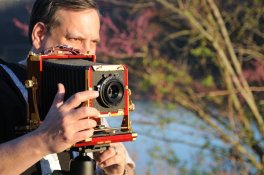Don't know enough about the Kodachrome project, so i'll just ask: why does it take so many cameras?
Well, for starters, there are three speeds of the film, 25, 64 and 200. So at any given time, all of those cameras will have partially used rolls of those films, which may or may not be what I want to use at that exact moment.
The FM3A is a battery free rig that I can beat up while on a climb with a sturdy manual focus prime instead of delicate Leica gear. The F100 uses all of my Nikon glass, even the "G" lenses that do not have aperture rings like the 14-24 and 200-400 that will not work with the FM3A.
The Leica M gear is the primary gear for the project as it is small, light and has outstanding optical quality. The 4 bodies provide both film speed diversity and frame line diversity not to mention backup for when one is in the shop getting an adjustment. But the optical range is pretty narrow, basically 28-90mm.
The XPan should speak for it self, incredible with Kodachrome 25 and 64.
The Stereo Realist, I actually have two, is for a 3D component to the project that will be a backlit gallery show with viewers stuck on the wall for people to look through. I am shooting with one 3D and the other will travel from country to country for other photographers to use. They were super cheap, not a big loss if the traveler gets lost.
It's just like anything else in professional photography, lots of redundancy for critical applications and lots of different gear to cover an infinite scale of visual options in a finite amount of time. Sometimes I will have one body doing a star trail and will need another for a slightly different shot so two or even three bodies going at the same time are not uncommon.
They are like socket wrenches, there is a basic approach. And there is a total approach that means you have 5 different sets of the same sizes.







